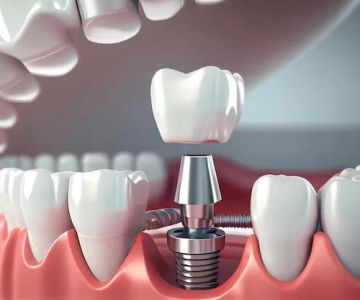How Do Braces Straighten Teeth? The Complete Guide to Orthodontic Treatment
- What Are Braces?
- How Do Braces Work?
- Types of Braces
- Benefits of Getting Braces
- Caring for Your Braces
- Braces Treatment Timeline
1. What Are Braces?
Braces are dental devices used to align and straighten teeth, improving both appearance and functionality. They consist of a combination of brackets, wires, and bands that work together to gently shift teeth into the correct position over time. Braces are most commonly used to correct issues such as crooked teeth, overcrowding, and bite problems.
2. How Do Braces Work?
Braces straighten teeth through the application of continuous pressure over a period of time. This pressure is applied by the brackets, which are fixed to the surface of your teeth, and the wire that connects them. The wire gradually shifts the teeth into the desired position. Over time, this pressure causes the bone around the roots of the teeth to remodel, allowing the teeth to move into their new positions.
The process of moving teeth with braces may seem slow, but the results are long-lasting and effective. The treatment can take anywhere from a few months to a few years, depending on the severity of the misalignment and the patient's age and cooperation.
3. Types of Braces
There are several types of braces available, each with its own advantages and considerations:
- Traditional Metal Braces: The most common type, made from stainless steel. They are highly effective for a wide range of alignment issues.
- Ceramic Braces: Similar to metal braces but made from clear or tooth-colored materials, making them less noticeable.
- Lingual Braces: These are placed behind the teeth, making them virtually invisible from the outside.
- Invisalign: A modern alternative to traditional braces, Invisalign uses clear plastic aligners that can be removed for eating and cleaning.
Each type of braces has its own pros and cons, and your orthodontist will help determine the best option for your specific needs.
4. Benefits of Getting Braces
Braces offer numerous benefits beyond just improving the appearance of your smile. They can:
- Correct bite issues such as overbite, underbite, and crossbite.
- Reduce the risk of tooth decay and gum disease by making teeth easier to clean.
- Enhance speech and chewing function.
- Improve overall self-confidence by giving you a straighter, more attractive smile.
By addressing dental alignment issues, braces help promote better oral health and a more comfortable bite.
5. Caring for Your Braces
Taking care of your braces is essential for achieving the best results. Proper oral hygiene is crucial to prevent cavities and gum disease while wearing braces. This includes brushing your teeth after every meal, flossing regularly, and using an antibacterial mouthwash. Additionally, avoid foods that can damage the braces, such as hard candies, sticky foods, and chewy snacks.
Regular visits to your orthodontist are also necessary to adjust the braces and monitor progress. These appointments are usually scheduled every 4-6 weeks.
6. Braces Treatment Timeline
The length of your braces treatment depends on the severity of the dental issues being addressed. For most people, the process takes around 18 months to 2 years. However, some may need less time, while others may require a longer period of treatment. Your orthodontist will provide a detailed treatment plan that outlines the expected duration based on your specific case.
Throughout the process, you will notice gradual improvements as your teeth shift into their proper positions. While the journey may require patience, the end result is a healthier, more beautiful smile.
If you are considering braces, it's essential to consult with a professional orthodontist to discuss your options and determine the best course of action for your dental needs. To learn more about braces or to get started with your treatment, visit Dentistry Toothtruth today!







 Maui Whitening Orlando4.0 (32 review)
Maui Whitening Orlando4.0 (32 review) Bloomington Southside Dental Care3.0 (26 review)
Bloomington Southside Dental Care3.0 (26 review) Christiana Dental Center4.0 (650 review)
Christiana Dental Center4.0 (650 review) Carolina Dental Arts - New Bern Ave4.0 (152 review)
Carolina Dental Arts - New Bern Ave4.0 (152 review) Equitas Health Short North Medical Center3.0 (96 review)
Equitas Health Short North Medical Center3.0 (96 review) Prosthodontics of Madison - Kendra Schaefer, DMD & Christine Roenitz, DMD4.0 (25 review)
Prosthodontics of Madison - Kendra Schaefer, DMD & Christine Roenitz, DMD4.0 (25 review) The Importance of Oral Health Education During Pregnancy for a Healthy Pregnancy
The Importance of Oral Health Education During Pregnancy for a Healthy Pregnancy Best Tips for Brushing Your Teeth Properly for Healthy Gums: Essential Techniques for Oral Health
Best Tips for Brushing Your Teeth Properly for Healthy Gums: Essential Techniques for Oral Health Why Skipping Dental Checkups Can Lead to Bigger Oral Health Problems
Why Skipping Dental Checkups Can Lead to Bigger Oral Health Problems Advantages of Porcelain Dental Restorations
Advantages of Porcelain Dental Restorations How Can Diabetes Cause Tooth and Gum Problems? Preventing and Managing Oral Health Issues
How Can Diabetes Cause Tooth and Gum Problems? Preventing and Managing Oral Health Issues Healthy Habits for Promoting Good Oral Health and Hygiene: Tips for a Healthy Smile
Healthy Habits for Promoting Good Oral Health and Hygiene: Tips for a Healthy Smile